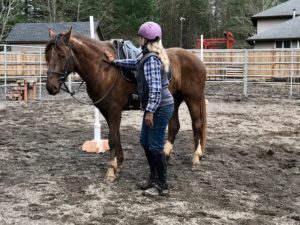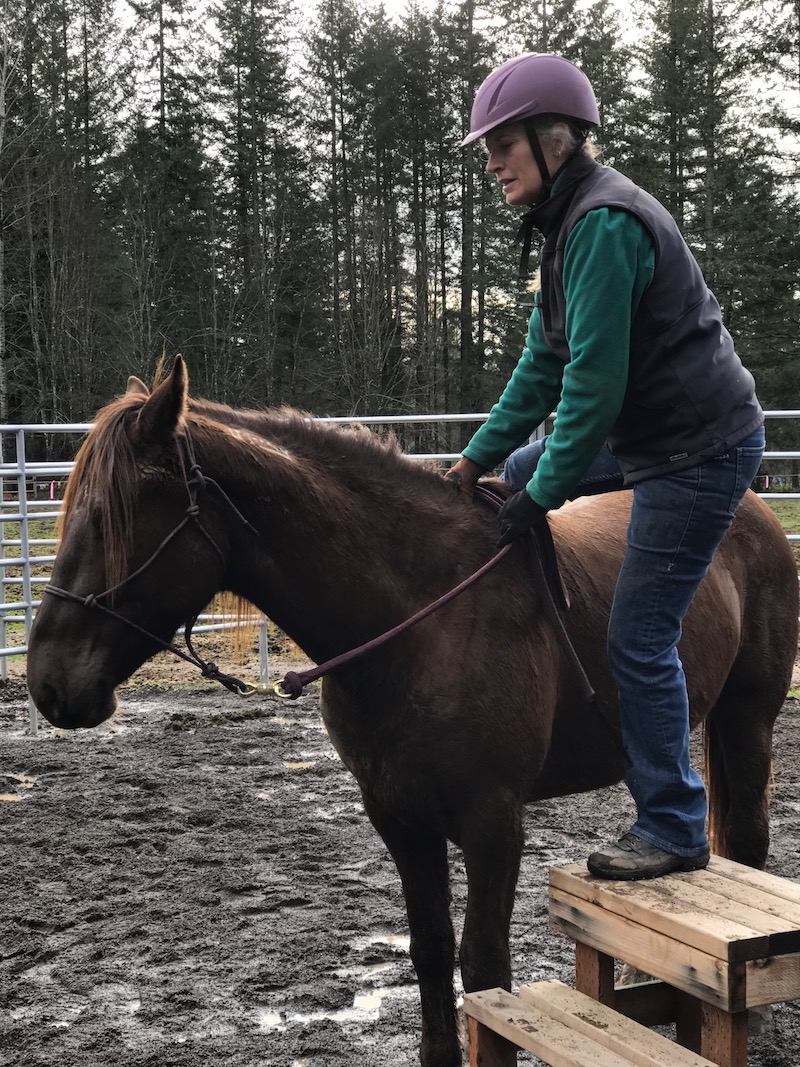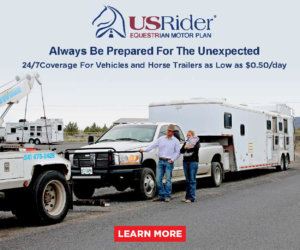One Woman’s Process for Obtaining and Training Wild Mustangs, Part 3
By Adrienne Devoe
The author is providing information based on her knowledge and experience. In no way does she profess to have all the answers. She encourages the reader to do their research for the most complete information.

At this point in your mustang taming, you’ve made initial contact using a pole or rope, you’ve used good timing along with appropriate pressure and release tactics, and you have a horse that is okay with your presence and physical contact. What is most important at this stage is to work around him with confidence (don’t creep or act hesitant). Handle him routinely as much as possible, and spend time doing things that make him feel comfortable and relaxed.
I like to brush my mustang a lot in the beginning because they find it soothing. Interact frequently with your mustang. Don’t be afraid to move naturally or make your usual noises. They need to get used to these things. However, keep in mind they can react quickly no matter how mellow they seem. I generally wear a helmet in the first month when having any interaction with my mustang.
There’s a lot that goes into training a mustang, or any horse, for riding. Some people are able to saddle and bridle their mustangs quickly because of the newly acquired trust for their humans, but I like to spend extra time helping them understand basic cues from the ground.
The first thing you should teach your mustang is to lead consistently. This always starts with a pulling pressure and quick release when they step forward. Do this enough to add the steps together, always remembering to reward with release and praise; you’ll have your mustang following you in no time. Once they lead well I start associating the forward pressure with clucking and use the word “whoa” when stopping.
Among the more important things to teach your mustang on the ground before riding is to move away from pressure applied physically at spots on their body where your leg or rein may touch, and non-physical pressure too. When you walk towards their hind end with vigor and make noise or swing your rope, you want them to move that hip away from you. Teaching this requires small steps with pressure until the tiniest change is seen, then release and praise.
For example, moving the hip away from you as you cluck and swing your rope (your ground aids) is the final product. It may start by you tipping the head towards the hip and applying your aids—just enough discomfort that the horse moves a step to straighten himself out (relieve the bend) and moves away from the non-physical pressure. This is a change! Release and praise. That’s how it starts…step by step. Moving the shoulders or haunches where and when you want are prerequisites to lunging and more advanced work.
To get your mustang lunging, work is best done in a round pen or small enclosure. Send him away from you using pressure at his shoulders or hips until he is moving out and away. The key to remember is to reward his try, no matter how small. If you send him away from you and he moves only two steps, cease the pressure. You may have to do this every few steps but remember to quit asking when he does the correct thing, even if it’s only a step. You are really trying to build understanding to get to the lunging part.
Mustangs are incredibly sensitive to pressure and I have found they learn quickly and try to please when you make sure to release and reward. Since mustangs have lived in herd environments all their lives, they have grown up understanding the dynamics of pressure, move away, and release. By working a step at a time, you will find your mustang will soon track around in both directions.
You can up the pressure to encourage a trot and eventually a canter but always remember to release (your pressure, your voice, your aids) when you get what you ask for…if only a few steps in the beginning. I use a flag to help move the feet and at the same time use a cluck and the word “trot” or a kiss and the word “canter” for the different gaits. I also use cues, such as “easy”, for my downward gaits and “whoa” for stop. In this way, you teach your mustang verbal cues for different gaits. This comes in handy when you start riding as your mustang will not understand what pressure from your heels or on his mouth means.
Control of the shoulders and hips, sending the horse away, and lunging are the most important elements of foundation training. Your mustang needs these skills before riding in order to be a pleasant mount who understands what is being asked once you mount up.

Adrienne Devoe is a website developer who has a passion for working with horses. She grew up on the East Coast doing pony club and since that time has owned and trained many horses and has thousands of riding hours under her belt in arenas and on the trails. Later in life she developed a strong interest in dressage and has pursued it with dogged determination, showing up to third level on her Irish Sport Horse and aiming for Grand Prix competitions.
Recently she inadvertently discovered mustang training while building a website for the Teens and Oregon Mustangs (TOM) program. Now, besides dressage, she is working with her own wild mustang with the TOM program as a competitor. The year before, she adopted two beautiful mustangs from the TOM program that have stolen her heart and turned her into an advocate of the versatility, resilience, strength and ability of the American Wild Mustang.






